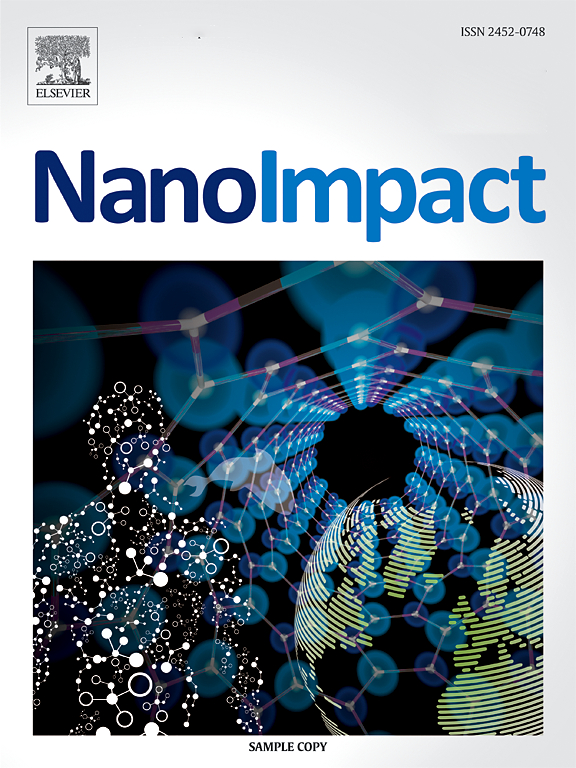不同粒径塑料微粒在作物中的吸收和生态毒性
IF 5.5
3区 环境科学与生态学
Q2 ENVIRONMENTAL SCIENCES
引用次数: 0
摘要
微塑料污染威胁着水生和陆地生态系统。在此,我们通过微观研究评估了三种作物幼苗根系对小(0.2 μm)和大(1.0 μm)聚苯乙烯(PS)微珠的吸收情况。此外,还研究了3种植物在不同PS颗粒暴露7 d后的生理生态。结果表明,鲜重和生长抑制率不受颗粒大小的影响,而根长、茎质量和根质量抑制率均显著高于矮姜和双色姜(矮姜、矮姜和双色姜的平均值分别为28.6、5.5和2.8)。小粒PS珠的吸收和积累均高于双色参,而大粒PS珠的积累较多。PS珠在不同组织中积累的荧光强度值证实了这些结果。PS处理组显著提高了黄颡鱼幼苗叶片中丙二醛含量,而双色黄颡鱼幼苗叶片中丙二醛含量不变。脯氨酸含量在0.2 μm组最高,对照组最低。大粒双色参和红花过氧化氢酶活性降低,平均值分别为17.5 Ug−1 FW和20.3 Ug−1 FW。综上所述,不同PS颗粒大小显著影响了其在所有物种中的积累和分布,以及抗氧化反应。更好地了解不同物种间MPs吸收和生态毒性的差异将有助于确保食品安全和有效的农业环境管理。本文章由计算机程序翻译,如有差异,请以英文原文为准。
Uptake and ecotoxicity of microplastics of different particle sizes in crop species
Microplastics (MPs) pollution threatens aquatic and terrestrial ecosystems. Herein, we assessed the uptake of MPs in seedling roots of three crop species exposed to small (0.2 μm) and large (1.0 μm) polystyrene (PS) beads by a microcosm study. Additionally, the physiological ecology of three species was also investigated after 7 d of exposure to different PS bead sizes. The results showed that fresh weight and growth inhibition was unaffected by particle sizes, while root length, shoot mass and root mass inhibition was significantly higher in C. sativus than that in P. vulgaris and S. bicolor (mean 28.6, 5.5 and 2.8 in C. sativus, P. vulgaris and S. bicolor, respectively). Uptake and accumulation were higher for small PS beads in P. vulgaris and C. sativus compared to that in S. bicolor, while more large PS beads were accumulated in C. sativus. Fluorescence intensity values of PS beads accumulation in different tissues confirmed these results. Malondialdehyde levels in seedling leaves of P. vulgaris and C. sativus were elevated in PS treatment groups but unchanged in S. bicolor. The highest and lowest proline content were observed for 0.2 μm and control groups, respectively. The Catalase activity was decreased in S. bicolor and C. sativus for large beads, with the average values of 17.5 and 20.3 Ug−1 FW, respectively. In conclusion, different PS bead sizes significantly affected the accumulation and distribution in all species, as well as the antioxidant response. A better understanding the difference in MPs uptake and ecotoxicity between different species will help ensure food safety and effective agricultural environmental management.
求助全文
通过发布文献求助,成功后即可免费获取论文全文。
去求助
来源期刊

NanoImpact
Social Sciences-Safety Research
CiteScore
11.00
自引率
6.10%
发文量
69
审稿时长
23 days
期刊介绍:
NanoImpact is a multidisciplinary journal that focuses on nanosafety research and areas related to the impacts of manufactured nanomaterials on human and environmental systems and the behavior of nanomaterials in these systems.
 求助内容:
求助内容: 应助结果提醒方式:
应助结果提醒方式:


